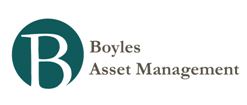Money and Finance
- Hoisington Q1 2014 Letter
Link to: Hoisington Q1 2014 Letter The Federal Open Market Committee (FOMC) has continuously been overly optimistic regarding its expectations for economic growth in the United States since the last recession ended in 2009. If their annual forecasts...
- Hussman Weekly Market Comment: When Rich Valuations Meet Poor Economic Data
The advance estimate for first quarter GDP came in decidedly below expectations at a 2.5% annual rate, but even that rate belies the fact that real final sales slowed to just 1.5% growth, from 1.8% last quarter. The remaining 1% of the first-quarter growth...
- Hussman Weekly Market Comment: Roach Motel Monetary Policy
Strong leading indicators such as the CFNAI and the Philly Fed Index have been weak for many months, and the deterioration in new orders has moved from a slowing of growth to outright contraction in recent months. In the order of events, a slowing in...
- Hussman Weekly Market Comment: Recession Warning, And The Proper Policy Response
As of Friday, the S&P 500 was below its level of early November 2010, when the Federal Reserve initiated its second round of quantitative easing. Aside from a brief bump in demand that kicked the recession can down the road a bit, the U.S. economy...
- Hoisington Q4 Letter
Factoring in a 4% Q4 growth rate, the U.S. economy expanded by 3% in real terms from the 4th quarter of 2009 through the 4th quarter of 2010. Despite this rise in GDP, the unemployment rate remained stubbornly high at 9.6% in the last quarter of 2010,...
Money and Finance
Hoisington Q3 2012 Letter
Growth Recession
Entering the final quarter of the year, domestic and global economic conditions are extremely fragile. Across the globe, countries are in outright recession, and in some instances where aggregate growth is holding above the zero line, manufacturing sectors are contracting. The only issue left to determine is the degree of the downturn underway. International trade is declining, so weaknesses in different parts of the world are reinforcing domestic deteriorations in economies continents away. With this global slump at hand, a highly relevant question is whether the U.S. can escape a severe recession in light of the following:
a) the U.S. manufacturing sector that paced domestic economic growth over the past three years has lapsed into recession;
b) real income and the personal saving rate have been slumping in the face of an interim upturn in inflation, and
c) aggregate over-indebtedness, which is the dominant negative force in the economy, has continued to move upward in concert with flagging economic activity.
New government initiatives have been announced, particularly by central banks, in an attempt to counteract deteriorating economic conditions. These latest programs in the U.S. and Europe are similar to previous efforts. While prices for risk assets have improved, governments have not been able to address underlying debt imbalances. Thus, nothing suggests that these latest actions do anything to change the extreme over-indebtedness of major global economies.
To avoid recession in the U.S., the Federal Reserve embarked on open-ended quantitative easing (QE3). Importantly, the enactment of QE3 is a tacit admission by the Fed that earlier efforts failed, but this action will also fail to bring about stronger economic growth.
- Hoisington Q1 2014 Letter
Link to: Hoisington Q1 2014 Letter The Federal Open Market Committee (FOMC) has continuously been overly optimistic regarding its expectations for economic growth in the United States since the last recession ended in 2009. If their annual forecasts...
- Hussman Weekly Market Comment: When Rich Valuations Meet Poor Economic Data
The advance estimate for first quarter GDP came in decidedly below expectations at a 2.5% annual rate, but even that rate belies the fact that real final sales slowed to just 1.5% growth, from 1.8% last quarter. The remaining 1% of the first-quarter growth...
- Hussman Weekly Market Comment: Roach Motel Monetary Policy
Strong leading indicators such as the CFNAI and the Philly Fed Index have been weak for many months, and the deterioration in new orders has moved from a slowing of growth to outright contraction in recent months. In the order of events, a slowing in...
- Hussman Weekly Market Comment: Recession Warning, And The Proper Policy Response
As of Friday, the S&P 500 was below its level of early November 2010, when the Federal Reserve initiated its second round of quantitative easing. Aside from a brief bump in demand that kicked the recession can down the road a bit, the U.S. economy...
- Hoisington Q4 Letter
Factoring in a 4% Q4 growth rate, the U.S. economy expanded by 3% in real terms from the 4th quarter of 2009 through the 4th quarter of 2010. Despite this rise in GDP, the unemployment rate remained stubbornly high at 9.6% in the last quarter of 2010,...

